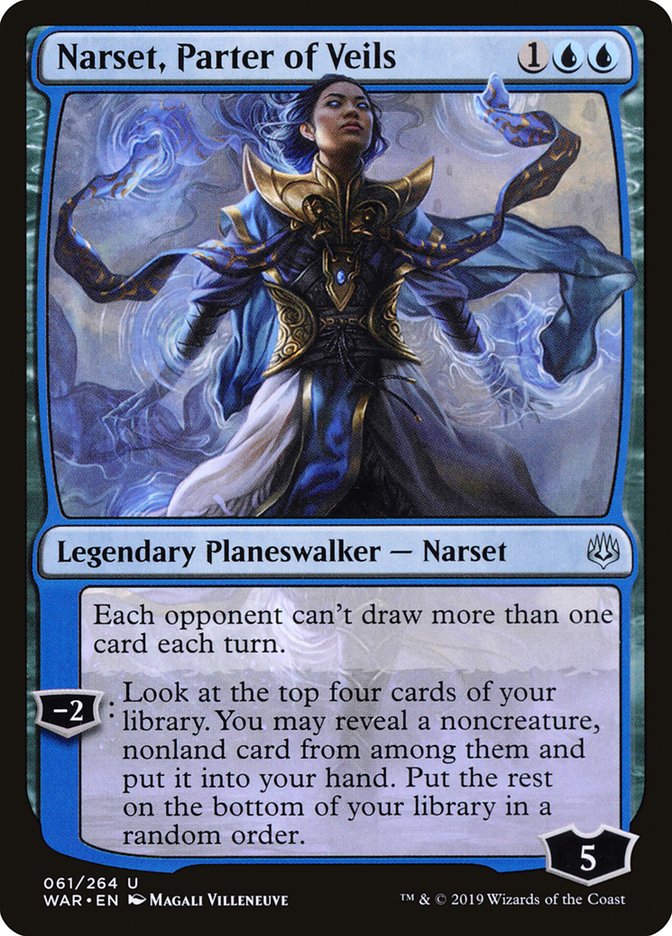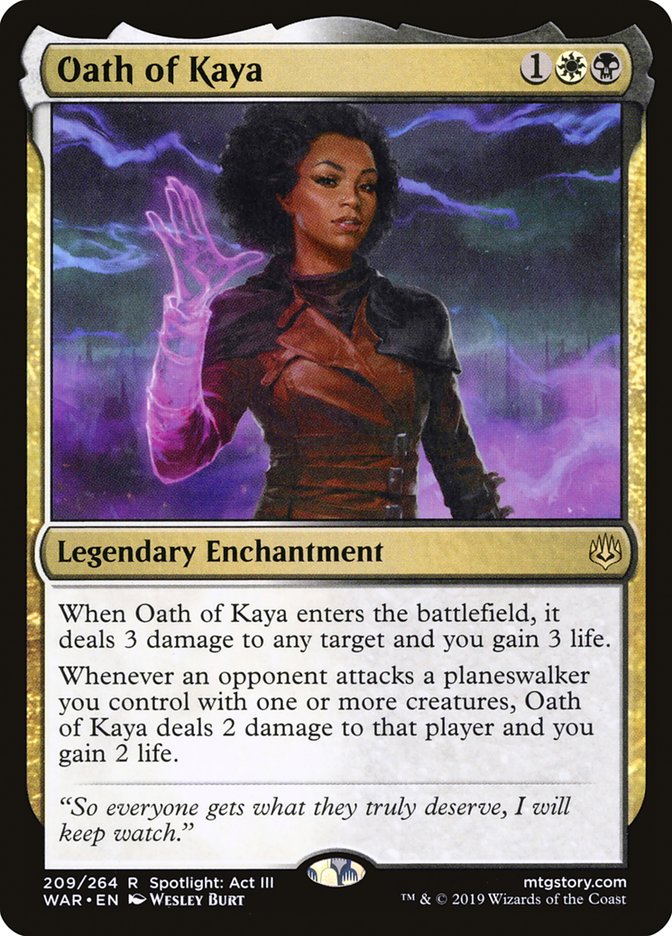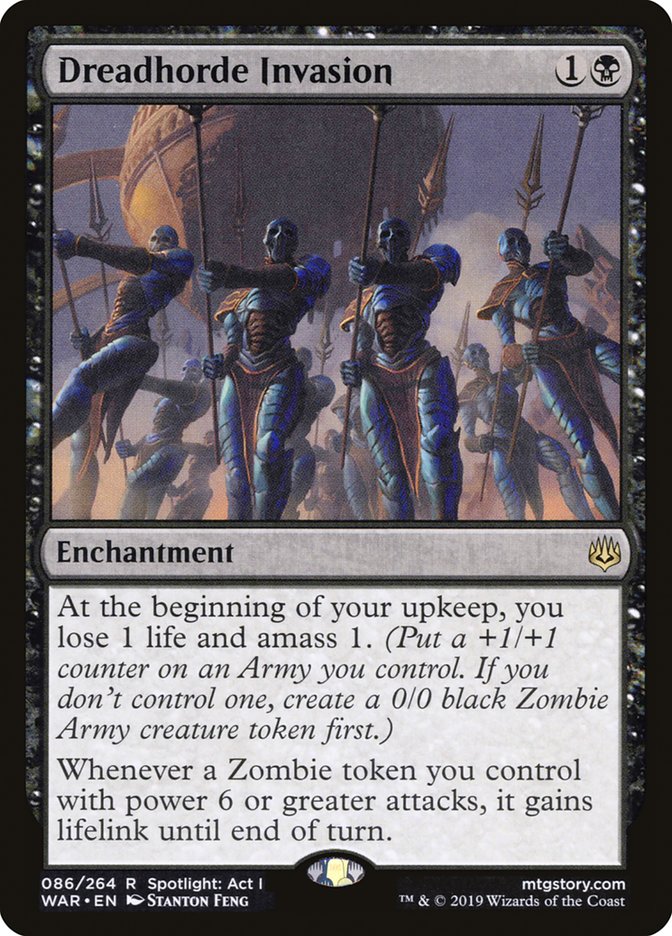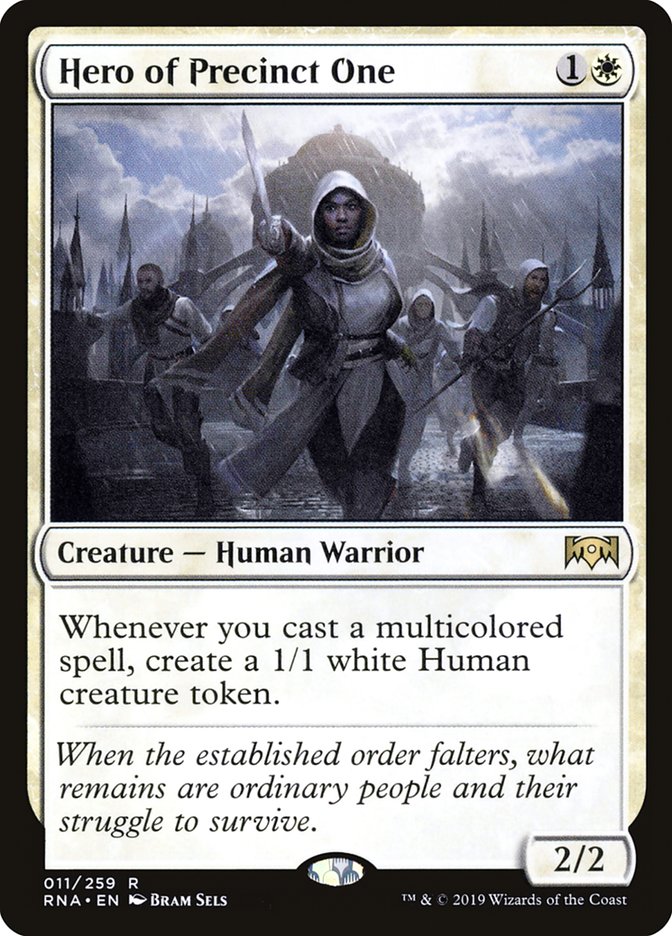Although my tournament result at SCG Richmond wasn’t the best, I learned a great deal about the SCG Tour metagame. I knew going in that Simic Nexus would be the weapon of choice for the most recognized names of the circuit, but the abundance of Mono-Red Aggro was a shock to my system. I tested extensively against it online and in person, developing a deep understanding of what tools are required to defeat it consistently. Esper Control has an abundance of answers to the red threats, gaining an abundance of life while removing each creature with ease. I crafted a build that did not give anything up in the mirror, while having all the necessary answers to the most common aggro deck.
It was my understanding that most of the SCG Tour folks arrived at the same conclusion. Knowing that Mono-Red Aggro was so easily defeated by control decks, it seemed foolish to even think about running it the first week in a Standard that was just dominated by Teferi, Hero of Dominaria. Clearly, a few masters moved to the next level. They understood that Esper Control was a tough matchup but anticipated that Simic Nexus would scare off the control team from arriving with a deck full of Oath of Kaya and Enter the God-Eternals. The gamble payed off, as Will Pulliam faced off against Collins Mullen to guarantee the trophy to the forces of evil.
I played against Mono-Red Aggro twice in the tournament and easily defeated it both times. One of my opponents, Julian John, is quite skilled at the game. He played very well, but my list contained three total copies of Oath of Kaya and three Cry of the Carnarium in the sideboard. On multiple occasions in the match, I was able to return Oath of Kaya to my hand with Teferi, Time Raveler, making the life advantage insurmountable.
The list I posted in last week’s article was close to what I ran at the tournament, with a few changes I mentioned toward the end of the piece. My match against Julian was very lopsided before and after sideboarding, even with me having a game loss to start. I get in the habit of copying decklists straight from my article, make a few changes, and submit. This usually goes well, but unfortunately, I decided to swap the Plains for a Swamp. It’s important that content creators practice what they preach, and I make every effort to play the lists I give my readers.
With some fresh experience on the SCG Tour, I have some modifications that will help you take down Syracuse next weekend with Esper Control.
Planeswalkers (10)
Lands (26)
Spells (24)

Narset, Parter of Veils changed me as a person. I questioned traditional card draw at its core, wondering if this little planeswalker is better than a multitude of options that I’ve used over the years. I was confident that Narset was powerful before the tournament, even though I only got a week of testing in with it. It’s clear now that Narset has changed the card advantage game for control in Standard, and even in the older formats.
The issue with card draw in Standard is that you can’t have too many copies of that effect in your deck. There’s no world where a control player can run two Search for Azcanta; four Narset, Parter of Veils; and four Chemister’s Insight in Esper Control.
The power of Narset must exceed Chemister’s Insight in order to take the staple slot away and I believe it does. Not only does the three-cost planeswalker give you any spell in the top four cards (because we don’t run creatures), it repeats the process the next turn with zero additional mana investment. Three mana for two of the best spells out of eight cards is absurd on its own, and it happens much more often than expected.
Due to the nature of Esper Control, Turn 2 is highly interactive. Either we’re taking an early threat from the opponent’s hand, setting up a Search for Azcanta, or removing a creature that has hit the battlefield early. Depending on the matchup, we can easily plan our turns to ensure the safety of Narset, Parter of Veils.
Even if we can’t protect her, she has already done us a great service. Getting us that vital spell and eating some damage against aggro decks is a fantastic series for us in the early game. The beauty of having it land on Turn 3 is the opportunity to lock in a Kaya’s Wrath the very next turn. With Chemister’s Insight, we must hope to have the battlefield wipe in hand prior; however, that likelihood is increased with Narset. It has been so consistent in testing so far that I confidently dropped the Kaya’s Wrath count to three and gave us an additional Dovin’s Veto to battle with.
Like with many of the other planeswalkers, Narset doesn’t just have one use that is relevant in Standard. The static ability prevents opponents from drawing more than one card a turn, making it one of the best answers to Simic Nexus and the control mirror. Soon, other control players will see the light with Narset and I would be petrified to leave home without four in the maindeck, knowing that other control players have already figured out that it is the optimal amount.
Unlike Chemister’s Insight, Narset is good against Mono-Red Aggro. Hitting key hate cards that gainlife is how the matchup is won and the planeswalker does it much better than the instant. Not only does it supply the fuel for victory, it also prevents Risk Factor from being used. It may seem unlikely that a low-loyalty planeswalker can survive for that to be relevant against Mono-Red, but that doesn’t matter. The fact that they must kill it, sometimes through an Oath of Kaya, in order to use their best card is very satisfying.
Moving forward, I will be playing four Narsets in all my control decks in Standard. I’m convinced that it’s the best source of card draw and hate against Simic Nexus and the mirror, as well as superior to Chemister’s Insight in most situations. The instant-speed nature of Chemister’s will be slightly missed in the control mirror, but it’s replaced with a three-cost spell that must be answered or the game ends. Being able to continue to develop your battlefield while preventing the opposing blue deck from drawing cards is huge. The gameplay between Esper Control and the mirror/Simic Nexus will change drastically with four Narsets.
If this type of slugfest isn’t your thing, I have also been working on a Brian Braun-Duin special on the side.

Esper Midrange has always fascinated me. I really enjoy Hero of Precinct One and chose my personality token based on it. After watching my pal crush people all weekend with it, I had to take it out for a spin. There were a lot of things I loved about his list, but there were some obvious changes I had to make in order to help lock up the Simic Nexus/Esper Control matchup and give it a fighting chance to beat Mono-Red Aggro.
Creatures (11)
Planeswalkers (7)
- 2 Teferi, Hero of Dominaria
- 1 Liliana, Dreadhorde General
- 3 Teferi, Time Raveler
- 1 Sorin, Vengeful Bloodlord
Lands (25)
Spells (17)

I discussed some of the changes I made with BBD right after I got a few hours of testing in with the deck. I didn’t care for the 26th land, nor did I like the amount of copies of Mortify that every Esper Midrange player uses. When an Orzhov Lightning Helix is in the format, it’s criminal not to include it in a midrange deck. Esper Control greatly benefits from its existence, but Esper Midrange takes full advantage of it. While you’re beating your opponent down with early pressure, the presence of reach in your deck makes those early hits much more impactful. I’m only playing three Oath of Kaya in the maindeck currently but can easily see the fourth copy being included if Mono-Red Aggro becomes the most-played deck.
Oath of Kaya is the biggest change to the deck, but not the tech that I advertised on social media. Dreadhorde Invasion finally has a home in Esper Midrange, shining as the alternative to Hero of Precinct One. Hands without a pressure two-drop were miserable against Simic Nexus and Esper Control. BBD told me that he would mulligan to a Hero of Precinct One against Simic Nexus Game 1, stating that the game was close to unwinnable without it. With the addition of Dreadhorde Invasion, there are now seven opportunities to have a killer start against the format’s most popular deck.
Dreadhorde Invasion, backed by a few reactive cards, absolutely demolishes Simic Nexus and Esper Control. When used in Dimir and Grixis, Dreadhorde Invasion didn’t do enough damage, but it perfectly fills the two-drop void that used to exist in Esper Midrange. This deck felt anemic when the first spell was cast on Turn 3, which explains why it hasn’t taken the format by storm yet. When the opening hand has Hero of Precinct One or Dreadhorde Invasion, it opens the floodgates for the more powerful threats that follow.
A very strong start is Hero of Precinct One into Thief of Sanity. This provides two must-answer threats for most decks, especially Thief of Sanity. Esper Control had the best answer for the duo, casting Kaya’s Wrath as a clean answer. The start of Dreadhorde Invasion into Thief of Sanity is similar, but not as simple to deal with as the previous example for Esper Control. Mono-Red Aggro is the only deck that punishes us for playing the watered-down Bitterblossom, and that’s an acceptable cost. Having access to maindeck Enter the God-Eternals and Oath of Kaya gives Esper Midrange game against Mono-Red Aggro that it didn’t have before. I added Kaya, Orzhov Usurper to the sideboard, making Game 2 and Game 3 that much easier.
Between the two decks, I believe Esper Control is a slightly better choice for this weekend. Even though my modifications made Esper Midrange stronger against Simic Nexus and Mono-Red Aggro, Narset, Parter of Veils has put Esper Control in a league of its own. Since the Mono-Red matchup is so good, it’s the wiser choice for SCG Syracuse due to the SCG Richmond results. Mono-Red Aggro was the finalist and winner, making it seem like the obvious choice for competitors to sleeve up in Standard. This is an opportunity for Esper Control to prove its strength against burn spells and bring the trophy back to the right side.






